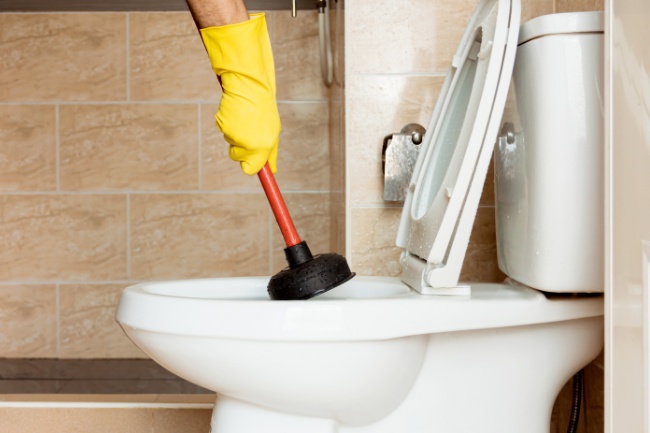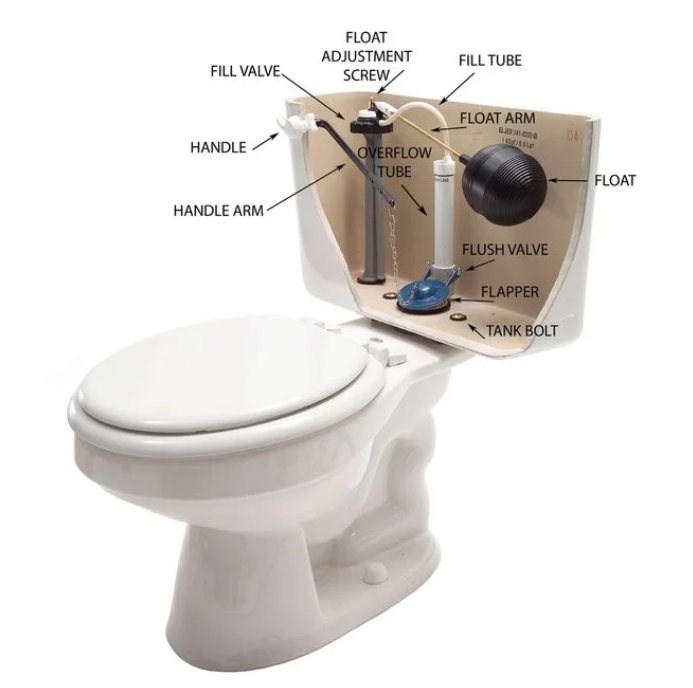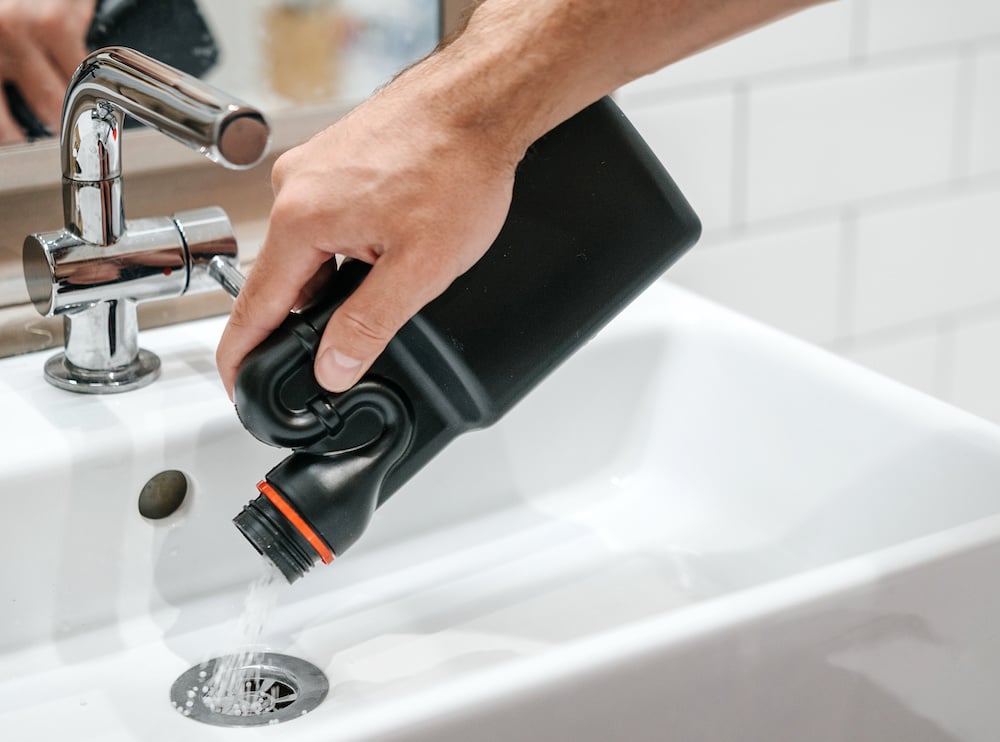How to Clean Grease Traps for Restaurants: 12 Steps
Posted by William Heinselman on
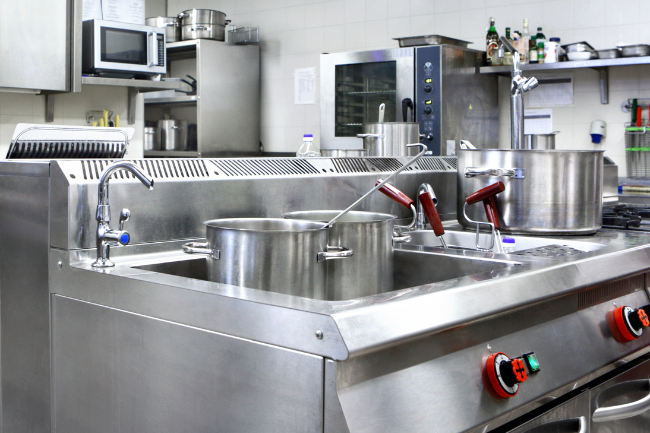
If you have just opened a restaurant or have operated one for some time, you need to know the location of your grease trap and its maintenance schedule. If you do not and fail to tend to this maintenance issue, you may find yourself ankle-deep in a sewer backup that can disrupt the operation of your business. If this happens on a Friday night, with a full house and tables turning, it can be costly in more ways than one.
If you own a restaurant and do not know what a grease trap is and how to clean it, keep reading.
Your Restaurant’s Grease Traps
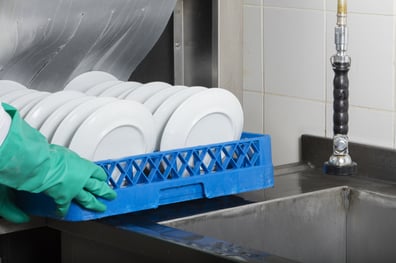 An integral part of some commercial plumbing at Sacramento restaurants, bars, and other establishments grease interceptors, more commonly known as grease traps are required by building code. Any facility that produces fatty waste that enters the drains from pot sinks, three-compartment sinks used for food prep, may be required by code to enter a grease trap before entering the public sewer.
An integral part of some commercial plumbing at Sacramento restaurants, bars, and other establishments grease interceptors, more commonly known as grease traps are required by building code. Any facility that produces fatty waste that enters the drains from pot sinks, three-compartment sinks used for food prep, may be required by code to enter a grease trap before entering the public sewer.
The grease trap prevents fats, oils, and grease from clogging public sewage lines and getting into water sources. State and county authorities regulate grease trap size, placement, and requirement. A grease trap has two chambers and works by allowing grease to cool to room temperature so that it solidifies and floats to the top of the trap. This allows fluid to flow freely throw the bottom, free of grease and oil that has solidified at the top of the chamber.
Using tubes to connect the two chambers, water from the bottom of the first chamber flows into the second chamber and leaves most oily byproducts behind.
The grease trap is designed to hold a certain amount of waste but requires periodic cleaning. If it is not cleaned you may end up with a scenario like the one mentioned above and find yourself in greasy water up to your ankles, in the middle of rush hour. Preventative maintenance is the key to keeping your grease traps from clogging up your commercial plumbing.
How to Clean a Restaurant's Grease Trap
Below, we've outlined the best tips and tricks for cleaning your establishment's grease trap.
1. Gather Your Gear
To start, it's important that you have the right supplies to get the job done. Here are some things to help you stay safe and clean the grease trap properly:
- Rubber gloves
- Nose plug
- Protective clothing, i.e. coveralls
- Crowbar and wrench
- Scraper
- Shop vacuum
- Container for storing grease and waste
2. Turn Off Equipment
Before starting the cleaning process, make sure to turn off all equipment connected to the grease trap, such as sinks and dishwashers, to prevent any accidental drainage during cleaning.
3. Locate the Grease Trap
Outdoor traps can be distinguished by their manhole coverings or septic tank designs. If a grease trap is indoors, it can typically be found in the restaurant's basement (directly below the kitchen) or beneath the kitchen sink.
4. Determine Whether a Professional is Needed
Once you locate the grease trap, the size of it may tell you whether a professional team is required to get it cleaned properly. Grease traps between 500 to 2000 gallons should be cleaned by a team of professionals. Smaller grease traps can be cleaned by restaurant staff.
5. Remove Solidified Grease
Use a scraper or spatula to remove any solidified grease and food particles from the trap. Place the collected debris in a designated container for disposal.
6. Empty the Grease Trap
Carefully scoop out the accumulated grease and wastewater from the trap using a bucket or container. Be cautious not to spill any grease on the surrounding area.
7. Clean the Trap
Use hot water and a degreasing solution to thoroughly clean the interior of the grease trap. Scrub the walls and surfaces to remove any remaining grease residue. Rinse the trap with water until it's clean.
8. Inspect and Replace Equipment (if necessary)
Inspect the trap components, including gaskets and seals, for any signs of damage or wear. Replace any damaged parts to ensure the proper functioning of the trap.
9. Put Everything Back Together
Once the trap is clean and all components are in good condition, reassemble the trap carefully. Make sure all connections are tight and secure to prevent leaks.
10. Dispose of Waste
Dispose of the collected grease and solid debris following local regulations. Grease should be disposed of in designated containers or collected by authorized waste disposal services.
11. Jot Down the Date
Keep a record of when the grease trap was cleaned and any maintenance performed. This will help ensure regular cleaning intervals are maintained and assist in troubleshooting any issues that may arise.
12. Turn the Equipment Back On
After cleaning and reassembly, reopen any equipment that was turned off earlier, such as sinks and dishwashers, and resume normal operations.
Following these steps will help ensure that restaurant grease traps are cleaned effectively and efficiently, promoting proper sanitation and preventing drain clogs and odor issues.
Preventative Maintenance for Restaurant Grease Trap
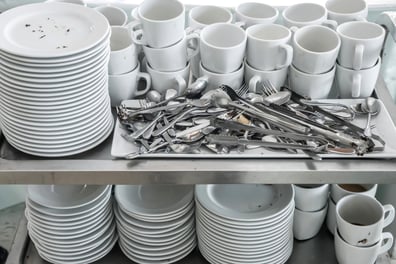 Preventing a sewer backup before it happens is the best practice. Here are a few steps that you can take that will help keep greasy water and food solids flowing freely through your grease traps:
Preventing a sewer backup before it happens is the best practice. Here are a few steps that you can take that will help keep greasy water and food solids flowing freely through your grease traps:
- Locate your grease trap(s) and inspect them
- Locate any documentation that lets you know when your grease traps(s) were last cleaned
- Schedule for cleaning the grease interceptor(s) when they are approximately a quarter full of grease and oil
- The suggested clean-out schedule for your grease trap(s) is approximately every three months. This schedule is determined by the amount of business in your establishment and the size of the trap
What to Do if Your Grease Trap Overflows
- Stop any water from flowing into the kitchen drains
- Call a plumber to inspect your commercial plumbing
- Use cat litter to absorb any spilled grease
- Do not hose greasy waste into storm sewers if you have a spill
- Have lines from the grease trap to the sewer cleaned and the lines from the trap to the building cleaned after an overflow
Professional plumbers can use high-tech equipment, like video line inspection, to inspect your commercial plumbing pipes. This will let you know if the lines are clear and not full of grease and waste from a grease trap that has not been kept clean. Setting your business up on a preventative maintenance program with a Sacramento plumber can help you prevent overflows and sewage back-ups before they occur with scheduled inspections and grease interceptor pumpouts.
What You Need to Know about Commercial Plumbing for Restaurants
The size and placement of these plumbing devices are determined by code and large facilities, with multiple kitchens and prep areas having more than one grease trap, with some being interior traps connected to a larger exterior trap. Plus, these systems face higher utilization than residential plumbing features, meaning they may deteriorate more quickly or be prone to clogs as a result of a high frequency of use.
In other words, these systems are quite complex and may require the help of a professional if DIY methods aren't sufficient. Knowing the location of your commercial plumbing system parts can help you prevent problems before they erupt and threaten your day-to-day operations.
Keep Your Commercial Plumbing Flowing Freely
Sewer overflows can pose a risk to your employees, your customers, and your business. Maintaining the grease trap and commercial plumbing of your bar, restaurant, or other food service facilities should be part of your overall maintenance program.
The local EPA monitors sewage overflows and you can be cited for any spillage that affects the local sewer system. The cost for commercial plumbing maintenance is far less than clean-up and fines that you might accrue due to an overflowing grease trap. That's where we come in!
Contact Express Sewer & Drain today to learn more about our commercial services. We're here to help you avoid costly reparation expenses and fines.

